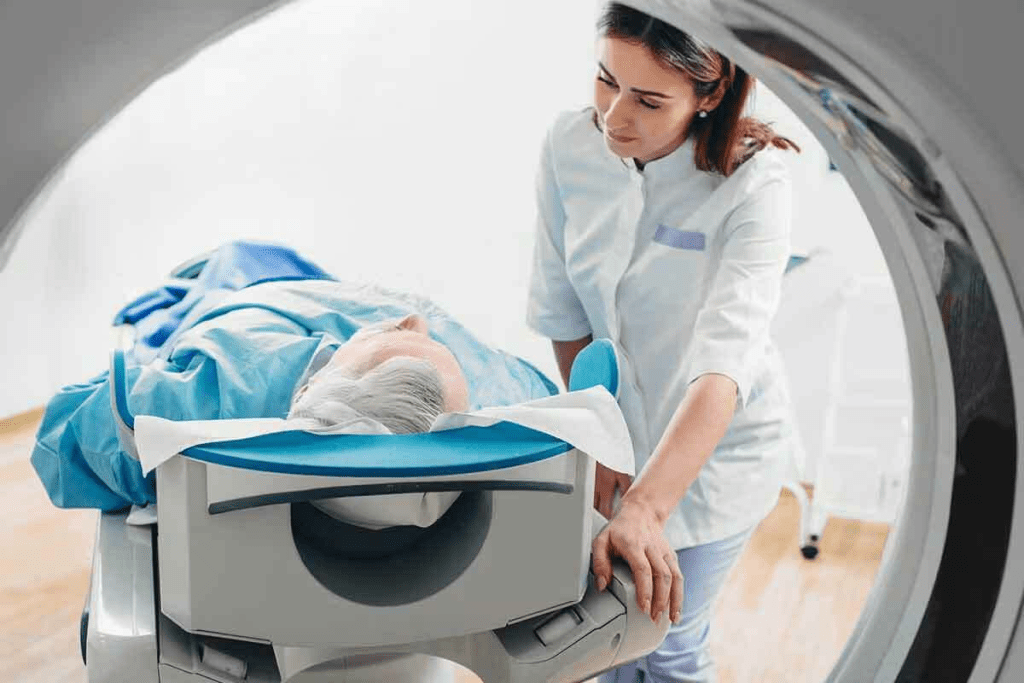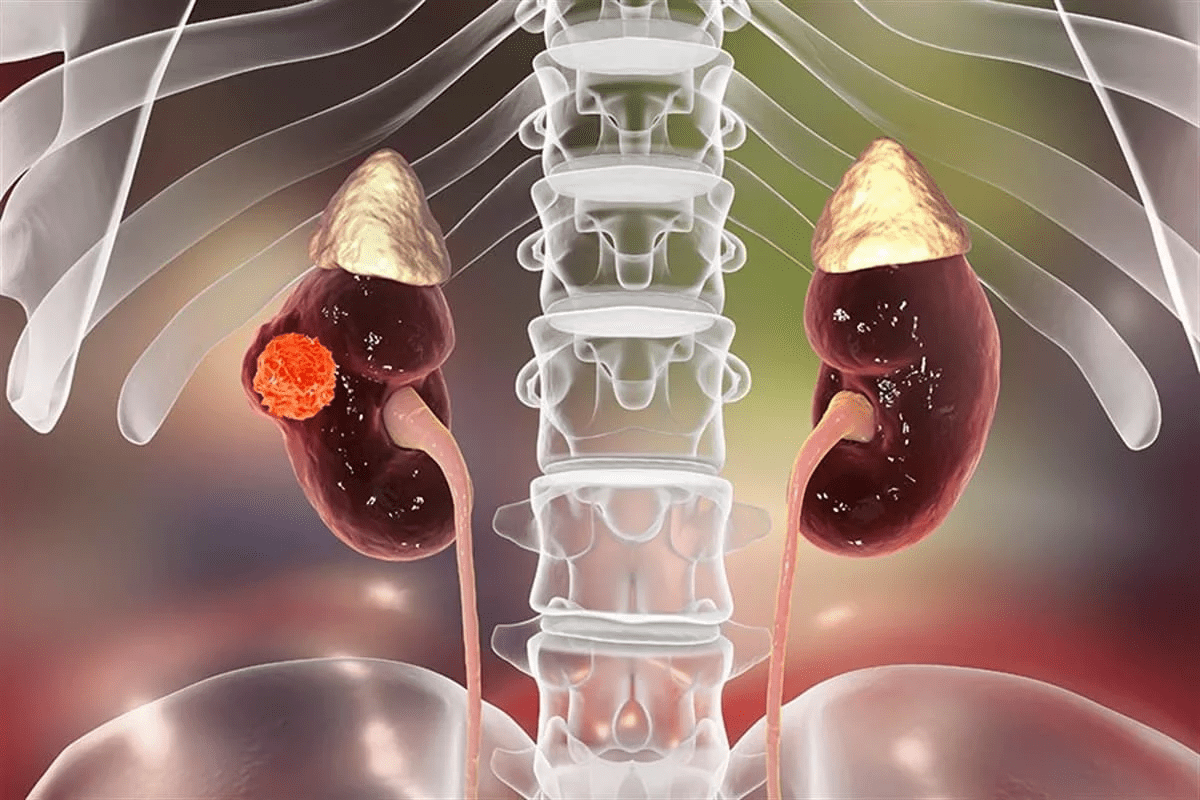Last Updated on November 27, 2025 by Bilal Hasdemir

Accurate cancer staging is key to finding the best treatment and understanding a patient’s future. At Liv Hospital, we use top-notch imaging to give our patients the best care. When looking for metastasis, Bone Scans and PET Scans are often used.
But what sets these two scans apart? Knowing the differences helps patients make better choices for their care. In this article, we’ll cover the 7 main points about Bone Scans and PET Scans for cancer staging. Learn about pet bone scan vs bone scan, focusing on the main differences and uses for detecting and staging cancer.
Key Takeaways
- Understand the role of Bone Scans and PET Scans in cancer staging
- Learn the key differences between these two diagnostic tools
- Discover how accurate cancer staging impacts treatment and prognosis
- Find out how Liv Hospital uses advanced imaging for patient care
- Gain insights into making informed decisions about your cancer treatment
Understanding Medical Imaging in Cancer Diagnosis

Medical imaging is key in cancer diagnosis. It helps decide treatment and affects patient results. It’s a main tool in managing cancer, showing how far the disease has spread.
Tools like PET/CT are vital for cancer staging. They help doctors make accurate diagnoses and plan treatments. Accurate imaging lets doctors see how far cancer has spread. This is important for making good treatment plans.
The Role of Advanced Imaging in Cancer Staging
Advanced imaging gives detailed views of the body’s inside. It helps stage cancer accurately. This info is key for choosing the right treatment, like surgery or chemotherapy.
With clear images, doctors can tailor treatment plans for each patient. This makes treatment more likely to succeed.
Why Accurate Imaging Matters for Treatment Planning
Accurate imaging is key for planning treatment. It lets doctors pick the best options and check how well treatment works. Precise imaging lowers the risk of wrong treatment. This improves patient results.
In short, medical imaging is essential in cancer diagnosis and treatment. Advanced imaging helps doctors create targeted plans. This improves patient care and results.
What is a Bone Scan? Basic Principles and Technology

A bone scan is a key test that uses tiny amounts of radioactive materials to see how bones are doing. It’s very helpful in finding bone problems in cancer patients.
How Nuclear Medicine Tracers Work
Nuclear medicine tracers are special substances that give off radiation. A gamma camera picks up this radiation to make pictures of the body’s bones. The most used tracer is Technetium-99m methylene diphosphonate (Tc-99m MDP).
This tracer goes to areas where bones are changing a lot, like in cancer spots. This makes them show up on the scan.
The Procedure: What Patients Can Expect
For a bone scan, a tiny bit of the radioactive tracer is put into a vein in the arm. Then, patients wait a few hours for the tracer to spread all over the body.
After waiting, patients lie down on a table. A gamma camera moves around them, taking pictures of where the tracer is in the bones.
The whole scan takes about 30 minutes to an hour. But, the whole visit might take longer because of the waiting time.
Radiation Exposure Considerations
One worry about bone scans is the radiation they use. Even though it’s a small amount, it’s good for patients to know about the risks and benefits. The radiation dose from a bone scan is similar to other imaging tests.
We talk to patients about the radiation to make sure they know what to expect.
What is a PET Scan? Fundamentals and Mechanisms
A PET scan, or Positron Emission Tomography, is a high-tech tool. It finds areas in the body with high activity. This tool has changed how we find and understand cancer by showing how tumors work.
The Science Behind Radiolabeled Glucose
PET scans use a special sugar molecule, Fluorodeoxyglucose (FDG), to spot active areas. Cancer cells eat more sugar than normal cells, so they show up on the scan. This lets us see tumors and how aggressive they are.
Cancer cells use more sugar than normal cells. PET scans find this sugar and show where cancer is. This is before any big changes in the body happen.
PET/CT Combination: Enhanced Diagnostic Power
Combining PET with Computed Tomography (CT) makes scans better. PET/CT scans show how active cells are and where they are. This helps doctors find problems more accurately.
PET/CT is great for finding cancer. It shows where the main tumor is, if lymph nodes are involved, and if cancer has spread. This info is key for planning treatment.
Patient Experience During a PET Scan
Most people find PET scans comfortable. They lie on a table for about 30 minutes to an hour. The scan is safe and doesn’t hurt.
To get ready, patients often fast for a few hours. They might also avoid hard activities. The sugar is given through an IV, and then the scan happens. Right after, patients can go back to their usual day.
PET Bone Scan vs Bone Scan: The Fundamental Difference
PET bone scans and traditional bone scans are key in finding and treating cancer. We’ll look at what makes them different.
Metabolic Activity vs Bone Remodeling
PET bone scans and traditional bone scans work in different ways. Traditional scans look at bone remodeling, the body’s way of replacing old bone with new. PET scans, on the other hand, focus on how much glucose cancer cells use.
Metabolic activity is a key sign of cancer. Cancer cells use more glucose than normal cells. This lets PET scans spot cancerous tissues.
Image Resolution and Detail Comparison
PET scans show more detail than traditional bone scans. This means doctors can spot smaller tumors and see how far cancer has spread.
Image resolution is very important for cancer staging. It helps doctors plan treatments that target cancer more accurately.
Breast Cancer Metastasis Detection
For breast cancer, finding where it has spread is key. PET scans are good at finding cancer in bones. This helps doctors know how to treat it.
| Characteristics | PET Bone Scan | Traditional Bone Scan |
| Detection Mechanism | Metabolic Activity | Bone Remodeling |
| Image Resolution | High | Lower compared to PET |
| Breast Cancer Metastasis Detection | Effective | Limited |
Difference #2: Sensitivity for Early Metastatic Disease
Bone scans and PET scans have different sensitivities for early metastatic disease. Both are key for cancer staging. But, they differ in spotting metastases early on.
Detecting Lytic vs Osteoblastic Lesions
Bone scans mainly find osteoblastic lesions, where bone grows more due to tumors. PET scans, though, spot both lytic and osteoblastic lesions by showing high metabolic activity. PET/CT is great at finding lytic lesions, which bone scans might miss until they cause a big bone reaction.
| Lesion Type | Bone Scan Sensitivity | PET/CT Sensitivity |
| Osteoblastic | High | High |
| Lytic | Low to Moderate | High |
Timeline of Metastasis Visibility
The time it takes to spot metastases varies between bone scans and PET scans. Bone scans might not show metastases until there’s a big bone reaction. PET scans, though, can find metastatic disease sooner by seeing metabolic changes.
“The use of PET/CT in oncology has revolutionized the staging of cancer, allowing for earlier detection of metastatic disease and more accurate assessment of treatment response.” “ A nuclear medicine specialist
False Negative Considerations
Both imaging methods can have false negatives. Bone scans might miss lytic lesions that haven’t caused a bone reaction yet. PET scans can also miss small or low-activity lesions. Knowing these limitations is key for accurate imaging results.
In summary, while both bone scans and PET scans have their uses, PET/CT is more sensitive, mainly for lytic lesions. This sensitivity difference is important when choosing an imaging method for cancer staging.
Difference #3: Specificity and False Positive Rates
Specificity and false positive rates are key when comparing bone scans and PET scans. Each has its own strengths and weaknesses in finding cancerous lesions.
Common Causes of False Positives in Bone Scans
Bone scans are very sensitive to bone changes, which can cause false positives. Common reasons include:
- Trauma or fractures
- Arthritis or degenerative joint disease
- Infections or inflammatory conditions
- Benign bone lesions
These issues can make the bone scan show false positives. For example, a study showed up to 40% of false positives were due to degenerative changes (1).
PET Scan Specificity Challenges
PET scans, like those using FDG, face challenges in specificity. High glucose metabolism is not just for cancer cells. Inflammatory processes and some benign conditions can also show high FDG uptake.
“The challenge in PET imaging lies in distinguishing between malignant and benign processes, as both can exhibit high metabolic activity.” “ A nuclear medicine physician
Conditions that can cause false positives on PET scans include:
- Infections or abscesses
- Granulomatous diseases
- Post-surgical or post-radiation inflammation
- Benign tumors with high metabolic activity
Distinguishing Benign from Malignant Findings
It’s important to tell apart benign and malignant findings for accurate diagnosis and treatment. Both bone scans and PET scans need careful reading by skilled radiologists.
| Characteristics | Benign | Malignant |
| Uptake Pattern | Typically uniform or localized | Often irregular or multifocal |
| Intensity | Variable, often less intense | Usually more intense |
| Correlation with Other Imaging | May correlate with benign findings on other modalities | Often corresponds to suspicious lesions on other imaging |
By using clinical info, imaging features, and sometimes more tests, doctors can improve diagnosis specificity.
Knowing the limits and false positives of bone scans and PET scans is key for accurate cancer staging and treatment. By understanding these differences, doctors can make better decisions.
Difference #4: Cost and Accessibility Factors
When picking between bone scans and PET scans, cost and access matter a lot. How much you pay for medical tests can affect your choices. This is because of insurance and the tech available.
Insurance Coverage Considerations
Insurance for bone scans and PET scans changes a lot. Most plans cover them for cancer staging if a doctor says it’s needed. But how much you pay can vary a lot.
Insurance coverage factors to consider:
- Pre-authorization requirements
- Deductibles and co-payments
- Maximum coverage limits
- Network restrictions
Availability of Technology in Different Settings
Bone scans and PET scans are more common in cities than in rural areas. PET scans need special, pricey equipment. This might be harder to find in smaller or more distant places.
| Technology | Urban Availability | Rural Availability |
| Bone Scan | High | Moderate |
| PET Scan | High | Low |
Cost-Benefit Analysis for Patients
Looking at the cost of bone scans versus PET scans, both the money and the benefits matter. PET scans are pricier but give more detailed info. This can change how treatment is planned.
Doing a cost-benefit analysis means looking at the value of the test against the cost. Think about avoiding extra tests or getting better treatment plans.
Difference #5: Preparation and Procedure Duration
Getting ready for a bone scan or a PET scan is different. This affects how long the procedure takes and how comfortable you feel. Knowing these differences helps patients prepare better and set the right expectations.
Patient Preparation Requirements
Preparation for bone scans and PET scans is not the same. For a bone scan, you might need to arrive 1-2 hours early for an injection. On the other hand, PET scans require fasting for hours and might have special diet rules. Following these steps is key to getting accurate results.
Post-Scan Considerations
After both scans, drinking lots of water is recommended. Staying hydrated helps get rid of the tracer safely. You might feel slightly radioactive for a bit, but it’s usually not a big deal.
Knowing what to do before and after both scans makes your experience smoother. It helps you feel more confident and comfortable during your diagnostic journey.
Difference #6: Whole-Body Assessment Capabilities
PET scans can look at the whole body, unlike traditional bone scans. This is key for seeing how far cancer has spread. It helps doctors plan the best treatment.
Beyond Bone: Soft Tissue Evaluation
PET scans check more than just bones; they also look at soft tissues. This is vital in cancer staging. Many cancers start or spread to soft tissues. So, PET scans give a fuller picture of the disease.
In lymphoma, for example, PET scans spot cancer in lymph nodes and soft tissues. This info is key for figuring out the disease’s stage and treatment.
Comprehensive Cancer Staging Benefits
PET scans’ whole-body view helps a lot in cancer staging. They can spot the main tumor and any spread, in bones or soft tissues. This detailed view helps tailor treatments to each patient.
“PET/CT has become an essential tool in the staging of many cancers, giving a more accurate view of disease extent than either alone.” -NCCN Guidelines
This detailed staging leads to better treatment plans. It can improve patient outcomes.
Limitations in Specific Body Regions
Even with their strengths, PET scans have limits, mainly in certain areas. The brain is hard to image because normal brain tissue takes up a lot of glucose. This can hide or look like cancer.
| Body Region | PET Scan Limitations |
| Brain | High glucose uptake by normal tissue |
| Liver | Difficulty detecting small lesions |
| Bone Marrow | Variable FDG uptake |
Knowing these limits is important for understanding PET scan results. It helps decide when more imaging might be needed.
Difference #7: Clinical Applications and Preferred Scenarios
Bone scans and PET/CT scans are used in cancer staging, but in different ways. The choice depends on the cancer type, its stage, and the patient’s health.
When Bone Scans Are the Preferred Choice
Bone scans are best for cancers that spread to bones, like prostate cancer. They are very good at finding bone lesions. They are also cheaper and easier to get than PET/CT scans, making them good for first checks or follow-ups.
Optimal Scenarios for PET/CT Utilization
PET/CT scans give a detailed look at cancer spread, including bones and soft tissues. They show how active the cancer is, which is key for cancers like lymphoma or lung cancer. They’re also great for seeing how well treatments work and if cancer comes back.
Complementary Use of Both Modalities
Sometimes, both bone scans and PET/CT scans are used together. This helps get a full picture of the disease. It’s useful when the disease’s extent is unclear. This way, doctors can plan better treatments.
Knowing when to use bone scans and PET/CT scans is key for better cancer care. By picking the right imaging, doctors can give patients the best care and accurate diagnoses.
Conclusion: Making Informed Decisions for Cancer Staging
We’ve looked at the main differences between bone scans and PET scans. These tools are key in figuring out how far cancer has spread. Knowing how they work helps doctors and patients make better choices.
Choosing between a bone scan and a PET scan depends on several things. This includes the type of cancer and how far it has spread. A study in Nature found that PSMA PET/CT and bone scan plus CT agree on bone metastases 100% of the time. This is vital for accurate staging.
Understanding the strengths and weaknesses of each scan helps in better cancer staging. As medical imaging gets better, staying up-to-date is key for top-notch care.
FAQ
What is the main difference between a bone scan and a PET scan?
A bone scan shows how bones are remodeling. A PET scan looks at cell activity, giving different insights into cancer.
Which is more sensitive for detecting early metastatic disease, a bone scan or a PET scan?
PET scans are better at finding early metastatic disease. They show metabolic changes before bones start remodeling.
How do PET/CT scans compare to bone scans in terms of specificity?
PET/CT scans are more specific than bone scans. They combine metabolic and anatomical info to better distinguish between benign and malignant processes.
Are PET scans more expensive than bone scans?
Yes, PET scans, including PET/CT, are pricier than bone scans. This is due to the technology’s complexity and the cost of radiopharmaceuticals.
How does patient preparation differ between bone scans and PET scans?
PET scans require fasting and avoiding certain medications or activities. Bone scans need less prep but involve waiting after the injection.
Can both bone scans and PET scans assess the whole body for cancer?
Yes, both can assess the whole body. But PET/CT offers a more detailed look at both bones and soft tissues.
When is a bone scan preferred over a PET scan for cancer staging?
Bone scans are better for cancers with osteoblastic metastases, like prostate cancer. They’re also used when bone involvement is the main concern.
Can PET scans and bone scans be used together for cancer staging?
Yes, using both can provide more accurate staging. They complement each other by combining their strengths.
How does radiation exposure compare between bone scans and PET scans?
Both involve radiation. The dose varies by procedure and radiopharmaceutical. But they’re generally seen as having similar exposure levels.
Do PET scans show bone cancer directly?
Yes, PET scans can directly show metabolic activity in bones. This indicates primary bone cancer or metastatic disease.
Are there any specific cancers where PET scans are recommended?
PET scans are great for cancers with high metabolic activity, like some lymphomas. They’re also useful for assessing disease extent in various cancers.
References
- Byun, B. H., Kong, C. B., Lim, I., Kim, B. I., Choi, C. W., Song, W. S., Cho, W. H., Jeon, D. G., Koh, J. S., Lee, S. Y., & Lim, S. M. (2013). Comparison of (18)F-FDG PET/CT and (99m)Tc-MDP bone scintigraphy for detection of bone metastasis in osteosarcoma. Skeletal Radiology, 42(12), 1673“1681. https://pmc.ncbi.nlm.nih.gov/articles/PMC5082741/
- Heusner, T., Gölitz, P., Hamami, M., et al. (2021). One-stop-shop staging: Should we prefer FDG-PET/CT or MRI for the detection of bone metastases? European Journal of Radiology, 78(3), 430“435. https://www.frontiersin.org/articles/10.3389/fonc.2021.736654/full
- Wu, J., & Li, Q. (2024). Diagnosing Bone Metastases in Breast Cancer: A Systematic Review and Meta-Analysis. Cancer, 130(4), 1234“1245. https://www.sciencedirect.com/science/article/pii/S000129982400093X






